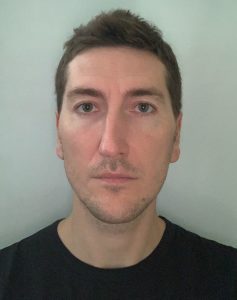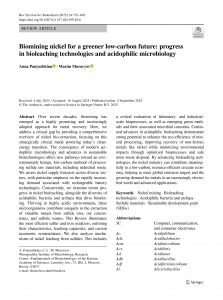Congratulations (!!!) to the young members of IAUPL, Dr.Maxim Muravyov and Anna Panyushkina,
for the publication of your research article in the international journal Reviews in Environmental Science and Bio/Technology (Springer Nature).
📘 Title: Biomining nickel for a greener low-carbon future: progress in bioleaching technologies and acidophilic microbiology
📅 Published on: September 5, 2025
📄 Volume 24, pages 753–803 (2025)
Your contribution perfectly illustrates the new generation of researchers committed to achieving the Sustainable Development Goals (SDGs) within the framework of the United Nations 2030 Agenda. IAUPL is proud to see its young members actively contributing to the construction of a scientific diplomacy framework, grounded in ethics, knowledge, and responsibility.
« Biomining nickel for a greener low-carbon future: progress in bioleaching technologies and acidophilic microbiology », Reviews in Environmental Science and Bio/Technology, Volume 24, pages 753–803, (septembre, 2025) – Springer
Abstract: Over recent decades, biomining has emerged as a highly promising and increasingly adopted approach for metal recovery. Here, we address a critical gap by providing a comprehensive overview of nickel bio-extraction, focusing on this strategically critical metal powering today’s clean-energy transition.
The convergence of modern acidophilic microbiology and advances in sustainable biotechnologies offers new pathways toward an environmentally benign, low-carbon methods of processing sulfide raw materials, including industrial waste. We assess nickel supply forecasts across diverse sectors, with particular emphasis on the rapidly increasing demand associated with rechargeable battery technologies. Concurrently, we examine recent progress in nickel bioleaching, alongside the diversity of acidophilic bacteria and archaea that drive biomining. Thriving in highly acidic environments, these microorganisms contribute uniquely to the extraction of valuable metals from sulfide ores, ore concentrates, and sulfidic wastes.
This Review illuminates the most efficient sulfur and iron oxidizers, outlining their characteristics, leaching capacities, and current taxonomic nomenclature. We also analyze mechanisms of nickel leaching from sulfides. This includes a critical evaluation of laboratory- and industrial-scale bioprocesses, as well as emerging green methods and their associated microbial consortia. Continued advances in acidophilic bioleaching demonstrate strong potential to enhance the eco-efficiency of mineral processing, improving recovery of non-ferrous metals like nickel while minimizing environmental impacts through optimized bioprocesses and safe mine-waste disposal. By advancing bioleaching technologies, the nickel industry can contribute meaningfully to a low-carbon, resource-efficient circular economy, helping to meet global emission targets and the growing demand for metals in an increasingly electrified world and advanced applications.



Commentaires récents